Deciding to buy an engagement ring is a momentous occasion. It signifies that you are ready to take your relationship to the next level. However, there are so many things to consider — gemstone, design, style, size, budget — that many find the process intimidating.
The elongated cushion cut is a well-loved gemstone cut characterized by a rectangular shape with rounded edges. Here are seven reasons you may want to go for a different diamond style:
- You want a colorless diamond.
- Elongated cushion cuts are highly complicated.
- Elongated cushion cuts do not come with an official cut grade.
- Shopping for an elongated cushion cut diamond is challenging.
- Many elongated cushion-cut diamonds do not hide inclusions well.
- Elongated cushion cuts are typically smaller than round cuts.
- The ring’s design must specifically call for an elongated cushion cut.
Each reason not to buy an elongated cushion-cut engagement ring is explained in further detail below, followed by the pros of choosing this cut. Some relevant facts, such as noteworthy terms, are also discussed.
What Is an Elongated Cushion Cut Engagement Ring?
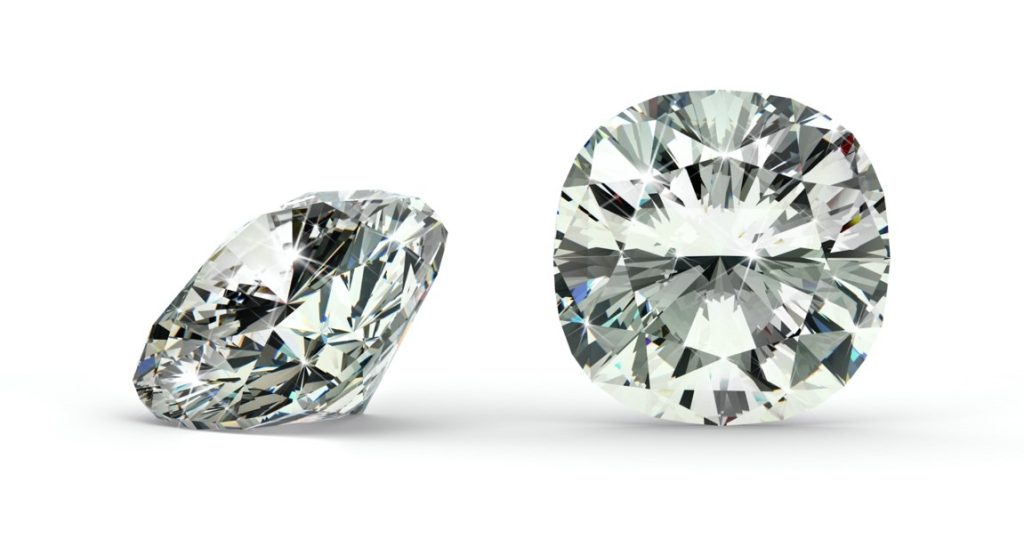
Cushion-cut diamonds have been gaining popularity over the past few decades. However, the cushion cut has been in the market for at least 200 years. Gemologists and designers first manufactured this cut to glimmer in the candlelight.
When discussing diamonds, many think that “cut” and “shape” refer to the same characteristic. However, a diamond’s cut describes its polish, proportions, and symmetry. Gemologists and jewelers believe the cut is the most significant factor in a diamond’s visual appeal.
Cushion cuts typically have a square shape; their length-to-width (L/W) ratio is 1. Meanwhile, an elongated cushion cut’s L/W ratio is at least 1.15. Consequently, these stones have a rectangular appearance.
Generally, cushion cuts have rounded corners, giving them a pillow-like structure. While traditional cushion cuts focus on symmetrical sides, the elongated ones can have more variety in proportions and ratios.
Your personal preferences will decide the stone’s overall proportions — do you want it to be as close to square-like as possible? Would you prefer a ratio of 1.2 so the diamond will look longer?
Reasons You Should Not Buy Elongated Cushion Cut
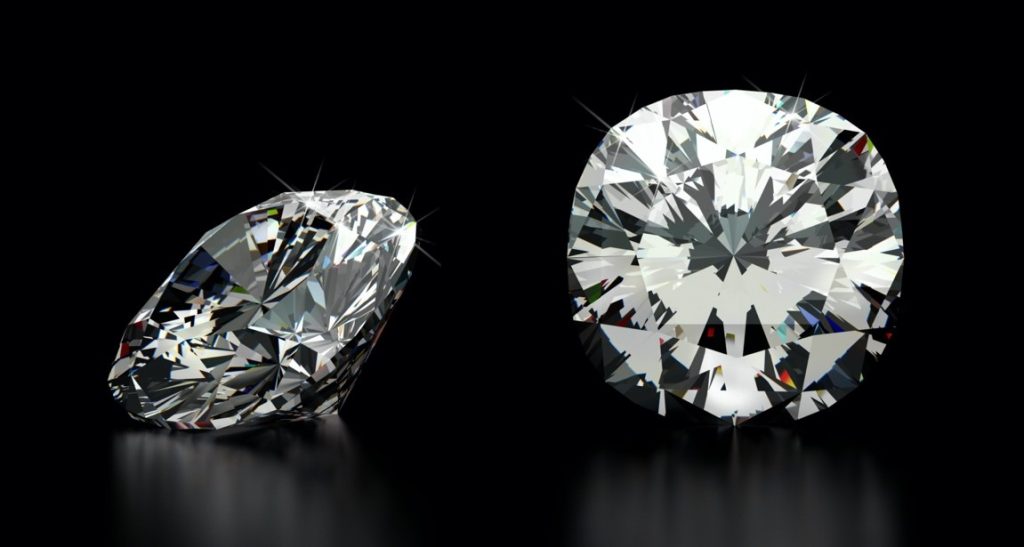
1. You want a colorless diamond.
Most people prefer a colorless — or nearly colorless — diamond. In technical terms, they are looking for color grades of D, E, F, G, H, or I. The further down the alphabet, the more tinted the diamond will appear.
The configuration of the facets of an elongated cushion-cut diamond intensifies the presence of color. Thus, you might have to move up the color grading scale to get the colorless diamond you want, which will be more expensive.
This cut typically features weaker light performance, allowing the stone’s inherent tint and flaws to be more visible. Thus, when purchasing elongated cushion-cut diamonds, jewelers suggest a color grade of at least G and a clarity grade of at least VS2.
2. Elongated cushion cuts are highly complicated.
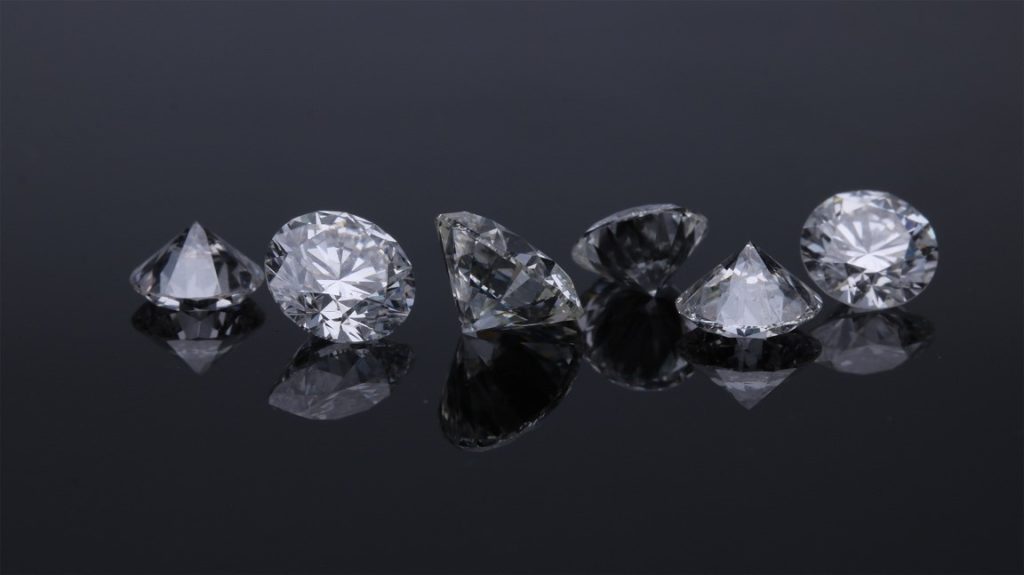
When reading about diamonds, you are bound to see the word “facet” a lot. According to South Shore Diamond Exchange, the gemological definition of facets is “the flat surfaces of a gemstone that are arranged in a geometrical pattern.”
There are several types of facets, each with different functions and locations. Generally, a diamond’s facets influence how it interacts with light. For instance, the pavilion facets located along the bottom of a diamond disperse and reflect internal light.
The renowned round brilliant cut has standardized facet patterns, meaning you can accurately predict how the diamond will interact with light. Other cuts also have standard configurations. However, cushion cuts do not; how they reflect and disperse light is not easily predictable.
The two types of cushion cuts — standard and modified, both explained in more detail below — have vastly different visible effects. The standard resembles the round brilliant cut, while the modified has a distinct “crushed ice” appearance.
This difference results from the number of their facets. On the one hand, standard cushion-cut diamonds usually had 58 facets. On the other hand, modified versions had 64 facets.
You might also find a “brilliant cushion cut.” Diamonds with this cut look like sparkly stars because of their larger and perpendicularly cut facets, pavilion configuration, and more.
3. Elongated cushion cuts do not come with an official cut grade.

Generally, cushion cuts do not have an official cut grade. The Gemological Institute of America (GIA) defines “cut” as the proportions and ratios of a diamond’s facets. As a result, the diamond cut influences how well the stone will interact with light.
Many gemologists would argue that among the 4 C’s of diamond quality — cut, carat weight, clarity, and color — cut is the most impactful. Besides its final cost, the cut of a diamond will determine the following properties:
- Brightness (the amount of white light a diamond reflects)
- Fire (scattered white light, resulting in a rainbow of colors)
- Scintillation (the amount of visible sparkle, both white and colored, whenever you move the diamond)
GIA designed a five-point scale, ranging from poor to excellent, to judge a particular diamond’s cut grade. This grade considers the following:
- Face-up appearance of the diamond, its brightness, fire, and scintillation
- Design, or the diamond’s durability and weight ratio
- Craftsmanship, how well-polished and symmetrical the diamond is
Thus, you can see why it can be problematic that elongated cushion cuts often do not have an official cut grade. Without the help of an expert, you might now know how durable the diamond is, how impeccable its craftsmanship is, and whatnot.
Be mindful that when you do start shopping for an elongated cushion cut, what the retailer listed as a cut grade will be subjective. You must personally inspect and confirm that the ring seems well-made.
If your primary issue with an elongated cushion cut is the lack of an official cut grade, consider going for a precision-cut cushion. An example would be the hearts and arrows design, which typically has a cut grade from the American Gem Society Laboratories.
4. Shopping for an elongated cushion cut diamond is challenging.
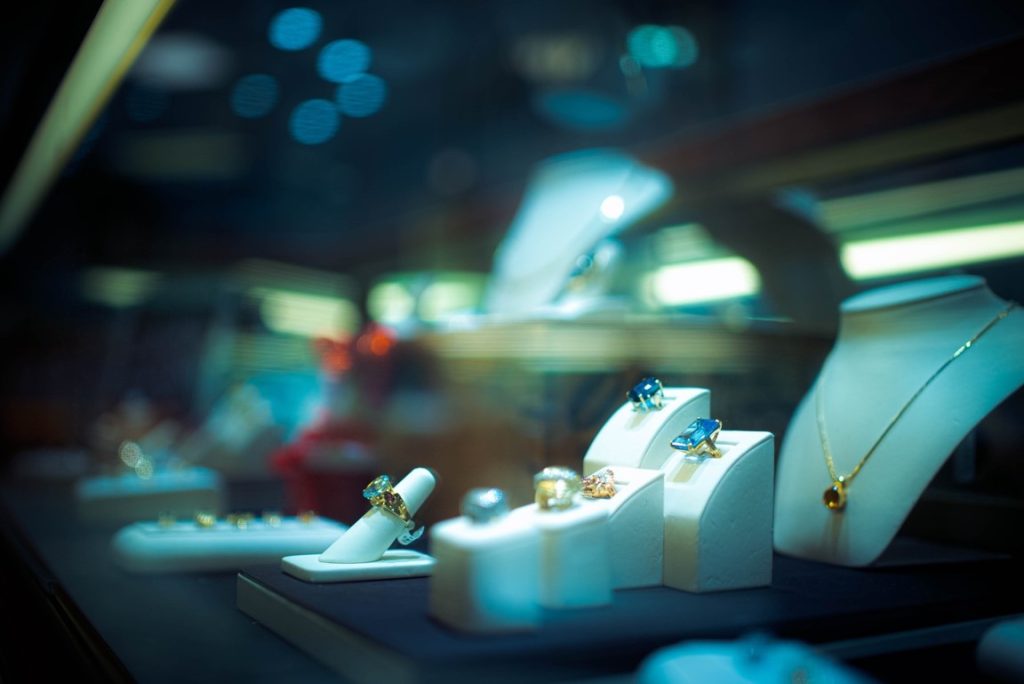
As explained above, cushion cuts generally do not come with a detailed official cut grade. You have to inspect everything individually, make comparisons that untrained eyes may find difficult to spot, and analyze characteristics that may confuse you.
Furthermore, retailers tend to group every cushion cut ring — whether standard or modified — into just “cushion.” They make no distinctions about the type. You might have to spend multiple hours browsing one collection, painstakingly taking note of specifications.
If you decide to purchase a standard or antique elongated cushion cut, you might have trouble finding one. According to jewelers, this type of diamond is extremely hard to find, accounting for only 1% of the entire supply of cushion diamonds.
The L/W ratio of an elongated cushion cut will also influence how tricky the sourcing process would be. As a general rule, the closer the ratio to 1, the easier it would be to find. As you approach higher ratios, availability becomes scarce.
5. Many elongated cushion-cut diamonds do not hide inclusions well.
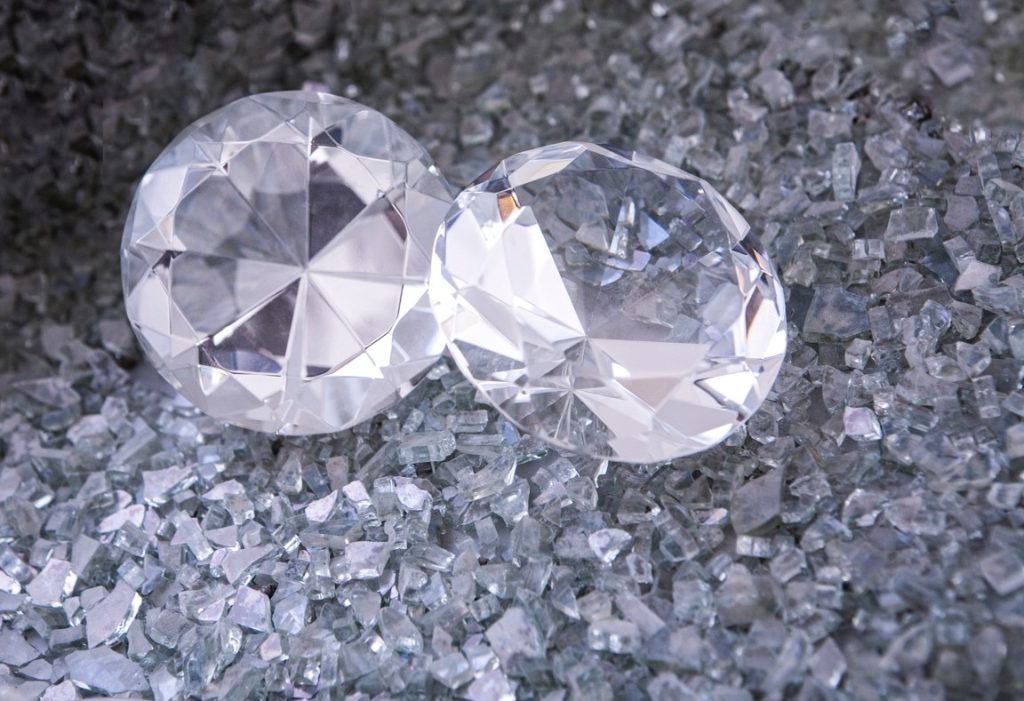
Every diamond naturally has inclusions and blemishes, which are internal and external characteristics often defined as imperfections. These characteristics influence how the gemstone will appear and interact with light.
The GIA Diamond Clarity Scale grades diamonds based on the presence, position, and type of inclusions and blemishes. There are six categories, with the most valued being Flawless and the least being Included.
Most blemishes and inclusions are microscopic; only trained and experienced diamond graders can see them, sometimes with the help of equipment.
If you opt for an elongated cushion cut, you must consider the diamond’s facet pattern. These natural flaws are hidden well in “crushed ice” or modern cushion cuts. However, antique or standard cushion cuts, especially the larger stones, do not conceal them well.
You may want to look for a tinier stone whose facets are more disconnected to work around this issue. Even Slightly Included diamonds will look clear.
6. Elongated cushion cuts are typically smaller than round cuts.
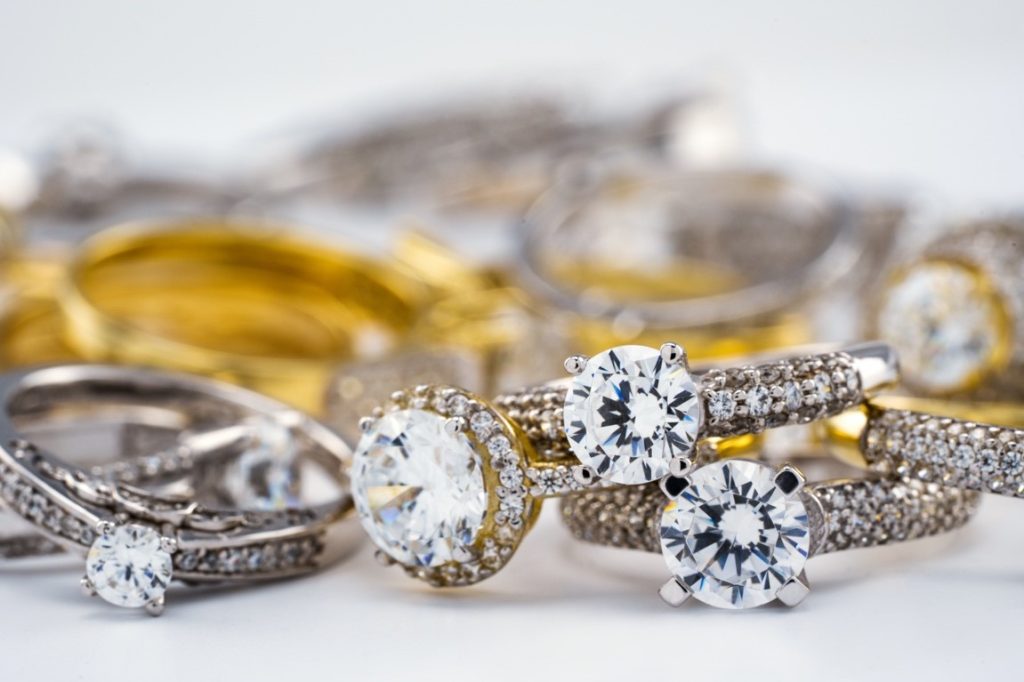
Let us say you have two diamonds whose carat weight is both 1.00ct. One diamond has a round cut, while the other has an elongated cushion cut.
The millimeter size of a 1.00ct round-cut diamond is typically 6.5mm.
The millimeter size of a 1.00ct elongated cushion-cut diamond with an L/W of 1.1 is usually 5.55mm x 6.00mm. The same carat weight but an L/W of 1.2 typically results in a 5.55mm x 6.60 stone.
In general, cushion cuts typically seem slighter than other shapes with the same carat weight. If you want a bigger engagement ring, you may have to splurge on a higher-carat weight.
To work around this issue, ask your jeweler if they have elongated cushion cut rings whose facets are slightly shallower. This feature will make the stone appear closer to its actual size. Alternatively, adding customizations such as a halo setting can also visually enlarge the stone.
It is important to note that these figures are averages and approximates. Every stone will vary, and you must inspect each one you come across.
7. The ring’s design must specifically call for an elongated cushion cut.
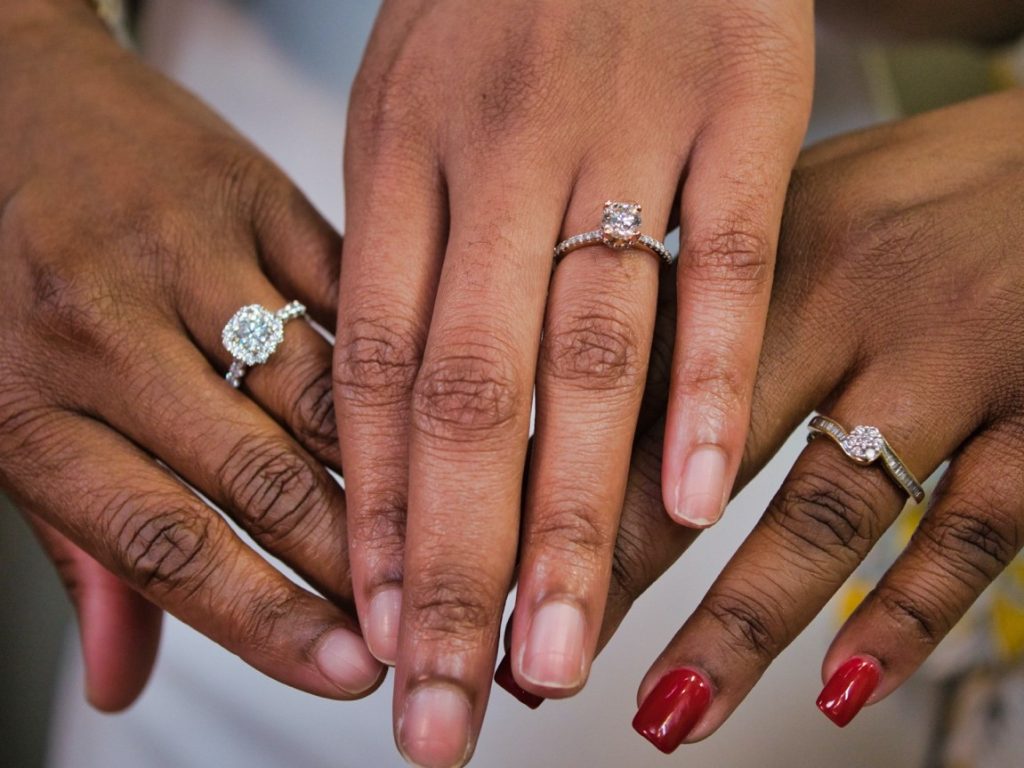
If you still want to purchase an elongated cushion cut engagement ring, make sure the ring is designed around the stone. You want to avoid choosing the band or other details first, as you might need to retrofit a premade product.
As mentioned above, cushion-cut diamonds are excellent at emphasizing their inherent colors. This quality might be a problem if you want a colorless diamond.
You can get around this problem by opting for yellow gold or rose gold setting. These tones will complement the warm hues your cushion-cut diamond might have, effectively masking the color. A color grade of H to J can appear colorless with these settings.
If you want white gold or platinum setting, it is best to look for a diamond whose color grade is at least G.
Pros of an Elongated Cushion Cut Engagement Ring
Elongated Cushion Cuts Have Excellent Visual Appeal
When choosing a diamond for your engagement ring, one of the top priorities is the stone’s brilliance. Although no other cut matches the brilliance of a round cut, elongated cushion cuts deserve their popularity due to their superior fire.
Similarly, a cushion-cut diamond’s facets can intensify the gemstone’s color. This quality might not suit you if you prefer a clear and colorless diamond. However, if you want a bold, colored diamond, opting for an elongated cushion cut will emphasize its color.
You Can Save Some Money
Diamond engagement rings will be expensive, regardless of the cut, carat, clarity, and color. However, experimenting with these stone features can help you find a relatively more affordable ring for your partner.
If you are looking for a more cost-friendly diamond engagement ring, it is worth looking at cushion-cut styles. They are often the least pricey options in jewelry stores; cushion cuts might be approximately 25% cheaper than a round brilliant cut.
This considerable difference in pricing does not mean cushion cuts are necessarily inferior. Round-cut diamonds result in a lot of wastage, as the gemstone’s natural shape is cubic. The closer to square-like or straight-edged the cut is, the less wastage there will be.
Furthermore, if you go for synthetic or lab-created cushion-cut diamonds, you can save up to 50% compared to other natural diamonds.
In general, you can expect to pay anywhere between $3,000 to $7,000 for a 1ct elongated cushion cut. Other factors will influence the price, such as color grade, clarity, brand, cost of living, and more.
Keep in mind that the costlier diamond is not always the prettier one. Besides the 4 C’s, a diamond’s rarity also plays a prominent role in its pricing. Thus, a $3,000 stone is not always inferior to a $7,000 in terms of gorgeousness.
The Edges Are Not Sharp
As mentioned above, cushion-cut diamonds have a distinct pillow-like appearance. Instead, they have rounded edges. Jewelers often describe them as the middle-ground between round cuts and princess cuts — square-like but without sharp edges.
The lack of sharp edges means that the diamond will not get damaged easily. The stone’s pointed corners typically receive the most breakage or scratches. Likewise, you also prevent getting it stuck on your hair, clothes, or other surfaces.
It is worth mentioning that the lack of sharp edges opens up more opportunities for personalization. You may prefer a chic, modern design that does not have protection for the stone’s edges. While this detail may be essential for other cuts, it is not for the elongated cushion cut.
There Are Many Style Options
Cushion cut rings have two primary versions: antique or standard, modern or modified. The antique cut features a traditional shape with larger facets, tinier tables, and rounder sides. As mentioned above, this style is the rarest. Some say antique cushion diamonds only account for 1% of the entire supply.
Designers and jewelers created the modern cushion cut to closely mimic the brilliant-cut achieved by adding more facets. These new features resulted in a “crushed ice” appearance.
Given the cut’s versatility and visual appeal, you can rest assured that your engagement ring will be timeless. Years later, you will not feel the urge to change your ring because it is no longer trendy.
When working with a jeweler, they will encourage you to customize your ring as much as you want. Cushion cuts have highly unique characteristics and specifications, and they deserve to have a band that mirrors that uniqueness.
An Elongated Cushion Cut Will Flatter Any Finger
Oval diamond rings are popular for many reasons, one of which is that they look fabulous on any finger. Elongated cushion cuts have the same effect. The amount of coverage you will get with an elongated cushion cut will suit your finger.
If you have a long and slender ring finger, an elongated cushion cut will counterbalance the length. Oppositely, if you have a chubby, stocky finger, this diamond shape will make your finger look thinner.
Elongated cushion cuts work well for other gemstones.
Eventually, you might decide that an elongated cushion-cut diamond engagement ring is not for you. However, you might love some of its characteristics and want it in a different accessory.
A cushion cut is a beautiful shape for other gemstones like garnet, ruby, sapphire, and spinel. Any stone that forms in long crystals will make for a beautiful elongated cushion-cut accessory For instance, you can give an elongated cushion-cut ruby ring for your 40th wedding anniversary.
Relevant Facts to Keep in Mind
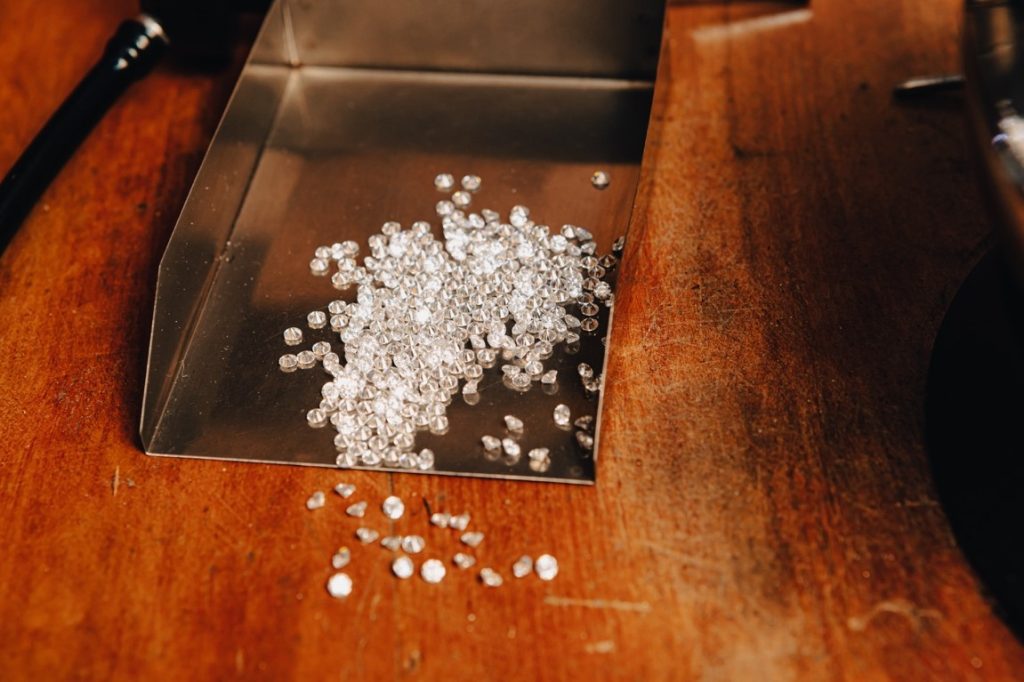
Diamond Measurements
When making a purchase as big as a diamond engagement ring, you want to be sure you are getting the most out of it. A diamond’s carat weight is not the only important characteristic you should look out for; it is part of the “4 C’s of diamond quality”:
- Carat → the stone’s weight; one carat is equivalent to 0.2 grams
- Cut → the diamond’s polish, proportions, and symmetry
- Clarity → the lack of internal and external flaws
- Color → the measure of colorlessness
Anatomy of a Diamond
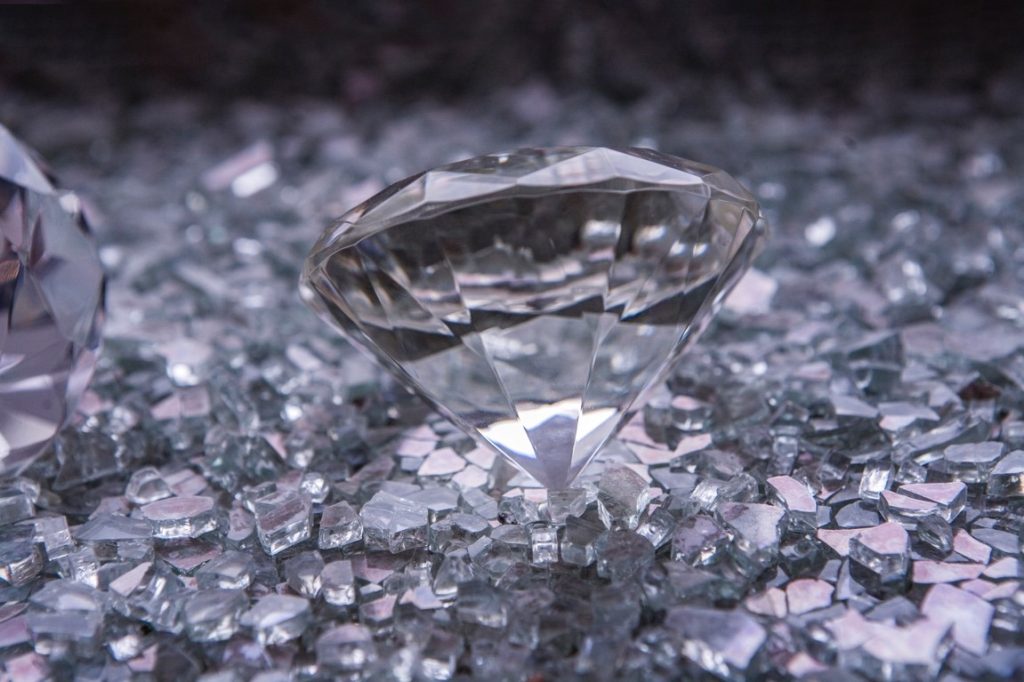
In connection with the diamond’s measurements, it is also valuable to read up on the significant parts of a diamond.
- Table → is a diamond’s biggest facet. You can find the table at the top of the stone. This part highly influences how the diamond exhibits fire and brilliance. Larger tables are excellent at showing brilliance, though they interfere with fire and poorly hide flaws.
- Girdle → is a diamond’s widest point, which means it is also a measure of the stone’s diameter. The girdle’s facets are typically compact and connect other facets to the table.
- Crown → refers to any part of the diamond above — and including — the girdle.
- Pavilion → refers to the lower half of the diamond starting from the girdle.
The measurements of these parts will affect the diamond’s brilliance and durability. For instance, a very thin girdle is susceptible to damage. Oppositely, an extremely thick girdle will make the diamond appear duller and smaller.
A diamond’s shine and glimmer heavily rely on its depth and table percentage. Depth is the measure of the stone’s height, from the table down to the lowermost facet (sometimes a pavilion, sometimes a culet).
You can calculate a diamond’s depth percentage by dividing its depth by the diameter. As for any cushion-cut stones, you would want a depth percentage within 61% to 68% to get the most stunning visual effect.
Meanwhile, you can obtain a diamond’s table percentage by dividing its table width by its diameter. The ideal table percentage for cushion-cut stones is anything below 68%.
A diamond that sits outside the recommended percentages will not be as brilliant as a diamond inside. For example, an elongated cushion-cut diamond with a 70% table percentage will not have as much sparkle as a 63%.
Other Pertinent Terms
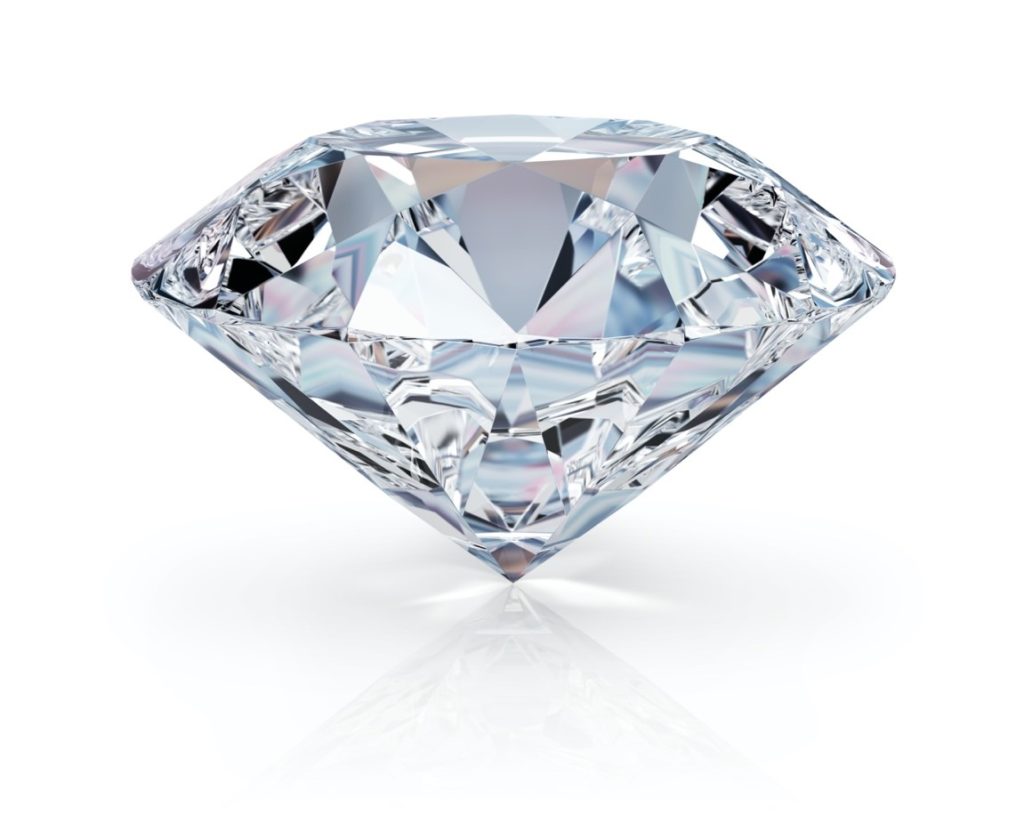
Gemology and diamond grading are complex disciplines. When researching, you might feel confused or intimidated by all the jargon and complicated terms. Here are other frequently used words you will find in diamond-related discussions:
- Bow-Tie Effect → is a visibly dark or shadowy area on a diamond when viewed from above. The diamond’s cut grade either lessens or intensifies this effect.
- Symmetry → is the assessment of a diamond’s facets and their configuration. How well are the facets cut and positioned? Symmetry grades range from Extremely Poor to Excellent, with the middle-ground being Good.
- Polish → focuses on the outer surface of a diamond. Can you see any pits, scratches, lines, or other flaws? Experts also grade a diamond’s polish from Extremely Poor to Excellent.
- Finish → combines symmetry and polish. This factor is a major deciding factor on a diamond’s cut grade.
- Leakage → is an area within the diamond that absorbs light but does not reflect it out. You want a diamond whose cut reduces leakages as much as possible, as leakage will influence how sparkly and gorgeous the diamond is.
There is a lot more that goes into assessing a diamond, like inspecting angles and proportion diagrams. However, a qualified jeweler will help synthesize this information in an easily digestible way.
Be Careful When Comparing Cut Grades
As mentioned above, elongated cushion cuts do not receive official cut grades from the GIA. Consequently, retailers can apply grades subjectively. They can even use terms specific to their store, such as “Ideal” or “Signature.”
“Cut inflation” can happen when sellers formulate their own grading system. Remember that these retailer-specific cut grades are subjective and often generous.
As much as possible, only compare diamonds and cut grades from the same retailer.
Avoid Retailers Who Have No Videos on Their Listings
It is worth reiterating that elongated cushion cuts are highly unique; they can have vastly different characteristics, properties, and interactions with light. If possible, visit a jeweler and ask if they have available elongated cushion cuts.
If you are shopping online, look for retailers which offer videos or ASET scope images. These resources will allow you to see how well the stone interacts with light, sparkles, and more.